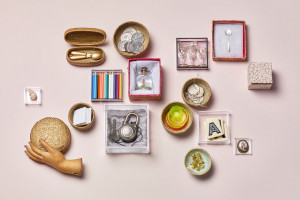How to Create a Serene Home
Posted on 19/04/2021 2:33 PM | by NaijaHouses

A home should be a refuge, a calm and inviting place to work, play and unwind. This has become especially true during the pandemic, when many of us are spending more time indoors. But all too often it falls short of that ideal. The clutter piles up, the sofa gets stained, the lighting seems cold, the paint colors aren’t quite what we expected and the accessories don’t work together to form a cohesive whole. By following a few simple steps, however, it’s possible to calm the chaos, take control and make any house or apartment a more welcoming home.
TAKE BACK CONTROL
A home that’s a mess will never seem serene.
SET GOALS
You may need to bring in some new items to make your home more controlled, but before that step begins, it’s important to deal with what you already have. Prior to starting a purge, set goals for what you want to achieve.
People have varying ambitions for their homes, and differences in taste. You might desire a Zen-inspired retreat, a gallery-like interior that showcases an art collection, or a pillowy palace full of soft surfaces. Each of these goals will require different types of objects, in different quantities. (If you have a partner or roommates, you will also need to work out these goals with them before you proceed. If you strongly disagree, think compromise.)
“The first step of organizing has nothing to do with stuff,” said Laura Cattano, a professional organizer in New York. “It’s about clarifying who you are and how you want to live.”
Consider whether you prefer spaces that feel invigorating or calming, she said, as well as the specific activities you want your home to support, such as cooking, exercising, writing, entertaining, reading or playing board games.
“Look back at spaces that made you feel unhappy, and ones that made you feel happy,” said Clodagh, an interior designer in New York who focuses on designing serene spaces, and try to understand why they did. If, for instance, your parents’ collection of antique Chippendale furniture made you squirm, but a minimalist Japanese hotel made you feel immediately relaxed, those things should inform your design decisions.
“You have to filter out stale ideas that your mother or aunt gave you about how you should live, or what you should have in your space,” Clodagh said. “Does it have to do with you or not?”
EDIT WITH EASE
Editing belongings and removing clutter from a home is easier said than done. Indeed, it can seem so overwhelming that some people simply put it off forever.
“People get stuck,” Ms. Cattano said. But the trick to moving forward, she said, is to relieve yourself of the pressure of making a decision to keep, recycle or throw away every single object in your home. Instead, start by eliminating the things you already know you don’t need or want.
“Always do the easiest things first,” she said, noting that most people have piles of old clothing, luggage, magazines, toys, worn bedding and tchotchkes just waiting to be eliminated. “With the editing process, you want to get as much out as quickly as possible to help change the energy of the space.”
Put objects you’re unsure about aside for the time being, and don’t let them derail the cleanout. As you see the space improving, Ms. Cattano said, you’ll probably have a better understanding about what to do with the trickier things.
BALANCE OPEN AND CLOSED STORAGE
The objective of getting organized isn’t to hide everything you own, but it does involve finding the right balance between open and closed storage. Utilitarian products can be stored neatly out of sight in closets, drawers and boxes, which will help more decorative and personal items such as vases, candleholders, pictures and coffee table books come to the fore on open shelves and surfaces.
“With less in the room, whatever you leave behind rises to the surface,” said Vicente Wolf, an interior designer in New York. “It makes your objects look more important, rather than just looking like a lot of stuff.”
If you collect ceramic bowls, vintage toys, African masks, seashells or anything else, group those objects together for maximum impact. “Rather than having them all over the house, put them all in one place,” he said. “Create settings that your eye can rest on.”
MAP OBJECTS TO THEIR FUNCTIONS
When you put things away, remember that you’ll eventually want to use them again, and if you store things close to where you use them, it will make performing daily tasks a little easier.
Keep toiletries you use every day together on a medicine cabinet shelf that’s easy to reach rather than scattered in different vanity drawers. Put board games close to the table where you play them, magazines by the reading lamp, and pots and pans directly beside the stove. “The experience should be graceful, intuitive and easy” when you go to use things, Ms. Cattano said.
She even likes to set up coffee and tea stations for her clients, where everything required for making a hot beverage is contained in a single kitchen cabinet, so no rummaging through the pantry for teabags or sweetener is required.
MANAGE THE DAILY ONSLAUGHT
Almost every day, our homes are inundated with packages, bills, shoes, jackets, bags, keys and phones as we come and go. If you don’t have a dedicated place to put these things, they invariably end up spread around the home.
We’ll give more tips tomorrow.
SOURCE: Nytimes.com